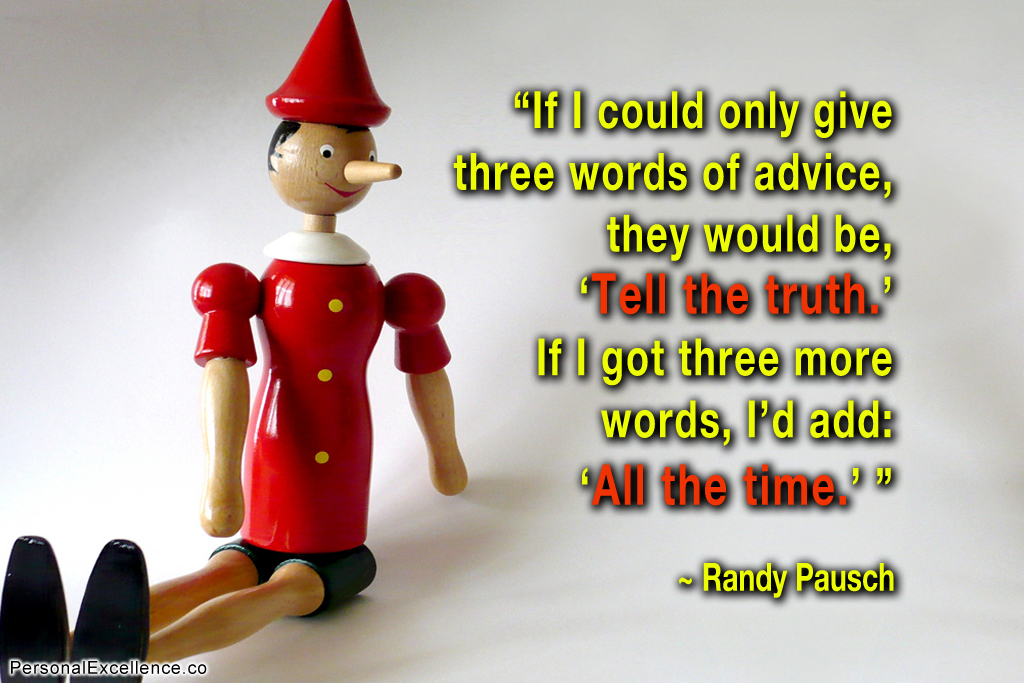This is part 2 of a 3-part series on meditation, including the benefits of meditation and how to meditate.
- Part 1: 10 Reasons You Should Meditate
- Part 2: How To Meditate in 5 Simple Steps
- Part 3: 10 Meditation Videos to Relax Your Mind

(Image: Galushko Sergey)
I frequently get queries on how to meditate so I thought it’ll be helpful to write an article on it and share with everyone. My intent for writing this post is to share what I’ve learned from my personal meditation practices. I’m not an expert in this area and my exposure to meditation thus far has been through personal lessons since there aren’t many people around me who have a habit to meditate.
Key Forms of Meditation
Since meditation is such an age old activity practised by different religions and cultures, there has been a huge range of different meditation techniques developed and amassed over the years. To date, many books and articles have been written on this topic.
Below is a list of three key forms of meditation which encompasses majority of meditations today. Many popularised meditation methods such as the Jose Silva method and Sedona method fall under one of these forms. I once came across a meditation book which covered over 100 meditation techniques — but most of them were really just nuance variations of the below:
- Still Meditation or Mindfulness Meditation — Meditating by focusing your attention on an object or process, such as your breathing, a flame, a mantra, a visualization, music, etc. An open focus is maintained. This means even though you are concentrating on something, you keep an open awareness of everything else that is happening around you and inside your mind.
- Moving or Walking Meditation — Gaining awareness through using simple repetitive steps. Some examples are Tai Chi, yoga or even simple walking exercises.
- Concentration Meditation — This is usually practised in religions. It is similar to mindfulness meditation with 2 differences (1) you concentrate on a religious prayer (2) you are required to maintain a closed focus where you close your awareness off from anything other than the prayer.
Common Objective of Meditation
While there can be many schools of thoughts on how to meditate exactly, the basic underlying objective is the same — to raise your consciousness or energetic “vibrations.”
Brainwaves in Meditation
Most people use meditation to achieve the Alpha brainwave frequency — where deep relaxation occurs. It can also be used to access the other brainwave frequencies, especially through the aid of meditative music (read section below on meditative music). There are five different types of brainwaves: — Gamma, Beta, Alpha, Theta and Delta. Note that our brain displays each type of wave every time, just that one of them tends to dominate at a certain consciousness.
- Gamma (100-38 Hz): This is when we encounter a situation of extreme stress and anxiety, leading us to transcend our typical activities and achieve peak performance. Think of the times when people perform incredible feats of behavior beyond their normal capacity- for example, a mother lifting a car to save her child, the underdog winning against overwhelming odds. People who play video games, such as Final Fantasy 7~8, will be able to associate this with limit breaks.
- Beta (38-15 Hz): This is our waking, conscious state and normal frequency we operate in. It’s characterized by logical, analytical ‘rational’ thinking and mental alertness.
- Alpha (14-8 Hz): Alpha state is the bridging state where the conscious mind meets the subconscious mind (between Beta and Theta) and the gateway to deeper levels of consciousness. It is a very tranquil, serene state — we get into this frequency when we are daydreaming and relaxed. Here, we retrieve information from our subconsciousness and experience intuitive guidance, creative ideas, and even epiphanies. As mentioned in Reason # 6 in 10 Reasons You Should Meditate, meditation provides you inspiration — through the Alpha state. Many famous people such as Albert Einstein and Thomas Edison have used the Alpha state to gain clarity and gain insightful solutions to problems which they could not solve in their conscious state.
- Theta (7-4 Hz): We shift to this frequency when we enter REM sleep. In this state, our subconscious mind is dominant and we enter into a trance state. This is a very expansive state of meditation — we can feel our mind expanding beyond physical boundaries — including our body.
- Delta brainwaves (3-0.5 Hz): The slowest of all brainwave frequencies, delta occurs when we are in extremely deep sleep. We are completely unconscious at this state. In this state, our physical healing is accelerated due to the trigger of the human growth hormone.
Before You Meditate
If You Are New To Meditation
If you are new to meditation, I highly recommend you start off with guided meditation — i.e. some form of external guidance, whether from a person or in the form of a pre-recorded audio file, where someone is instructing you. This will make the process easier to follow. Two good resources where you can download free guided meditations are Silva Method and Discover Meditation. I’ve used them both before and they are both well paced and easy to follow.
Use of Meditation Music
Some people may like to use meditation music while some prefer to just meditate in silence. Meditation music does help to shift into a higher consciousness, for two reasons. First, the music provides a focal point for you to focus on so you do not wander around in your thoughts. Second, meditative music vibrates at a higher level than normal music and this shifts you into a higher vibrational than the one you are normally in. This is why meditative music can also be called ‘consciousness-raising’ music.
Within the pool of meditative music available in the market, there are some which are able to raise consciousness more effectively than others, so you can listen and pick which suits you the most. Some meditative music are sounds of nature, while the guided ones like Paraliminals have narration to induce you into a particular state so you can easily achieve your goals.
I meditate with and without music, depending on my objective. If I would like to be induced into a specific state, I will use music. Sometimes I enjoy just meditating in a free-flow manner where I don’t use any music, immersing in the present moment and environment.
A good series of meditative music which I use is the Lifeflow series which is a series of 10 different meditative music for 10 progressive levels of vibration (moving from Alpha state, to Theta state, to Delta state). You can download a demo clip from the site. Another is Gaiam Life which provides various “rooms” with different themes (Space, Forest, Water, Zen, etc) that you can pick to meditate “in.” My favorite is the Winter Room. My only qualm about Gaiam Life is the music is quite short (only a few minutes), which makes it non-ideal for long periods of meditation.
How to Meditate In 5 Simple Steps
The meditation I’m covering here is Still Meditation or Mindfulness Meditation. This is my favorite form of meditation due to its simplicity; it’s possible to do it anywhere, whether at home or when you are commuting.
1. Find your meditation spot
This should be a private spot free from external disturbances. You should feel safe, at peace and comfortable in it. If you have a bedroom to yourself, it is probably the most appropriate inside your bedroom. After you pick the spot, clean the space around it. Remove any pieces of clutter lying around.
My meditative spot is in front of my bedside table — the table itself serves as a meditative altar with crystals, rocks, flowers and candles. Another favorite spot is on my bed. You can see pictures of it here.
2. Sit in a comfortable position
There are different recommendations on sitting positions, like the lotus position, sitting on a cushion, and so on (Click here for an image example). While there are probably good intentions behind each recommendation, mostly I found they just made the process a hassle, making me not want to meditate at all. Now I just meditate in a cross-legged position (on my bed) or sit on my chair. I look forward to it because it’s so comfortable and easy. You don’t have to specifically sit in a special way just to meditate. Find a position that’s most comfortable for you. Sitting on your chair is fine too. In fact, it’s a good option if you often experience numbness in their feet from sitting cross-legged (I do).
Whatever posture you choose, sit upright to facilitate the flow of energy. I do not recommend lying down (i.e. the sleeping posture) to meditate because it’ll usually induce sleep as opposed to letting you remaining in a state of awareness.
3. Clear your mind
Clear your mind. Loosen yourself up. Take a few deep, slow breaths.
4. Simply sit and observe
Then, just sit back and observe the inner dialogue playing in your mind. Let them float by. What are you thinking? What are you feeling? Just observe; don’t engage.
Many people probably think that in meditation, they have to force themselves not to think and block out all their mental thoughts. It is really quite the opposite. You let your mind continue to think, but you don’t engage. You take the role of a passive observer and watch them from the back of your head.
Say for example, if you have a sudden thought that says “I need to buy groceries tomorrow,” observing it means knowing that particular thought is there. If you proceed to react from the thought, such as feeling annoyed that you have to buy groceries, or thinking about what groceries you have to buy or what time to buy them, you are engaging with the thought. Don’t do that. Your desired state in meditation is to observe these thoughts, not engage with them.
One way of detecting when your focus breaks is to count slowly from 1, 2, all the way to 10. Repeat when you reach 10. Each time your focus is deviated, take note of the last number you were reading — this is an indicator of how long you held you focus. Try again, restarting from 1, and try to go beyond the last number this time.
The presence of these thoughts during meditation means they are being cleared. These thoughts have always been present in your mind; you are just not aware since there are so many thoughts screaming for attention inside your head! And now through meditation, they are clearing out, one by one. After repeated meditations, you will gradually reach a new level of mental Zen-like quietness. If you think your mind seems quiet now, try meditating a few days in a row — you’ll notice a new found mental peace.
When I started meditating regularly late last year, I reached a stage where my mind became so peaceful that whenever I had a thought, it would literally “sound” like a “sound.” This liberty from the mental clutter lets me focus even more than before — it is as if all those thoughts were weighing me down in the past, regardless of whether they were positive or negative. It prevented me from fully focusing and living in the present moment.
Meditate for as long as you want, till you feel cleansed, purified, refreshed and good to go. I recommend 30 minutes to start off. If you want to meditate longer, that’s even better. Back when I went for the Vipassana retreat, I underwent almost 100 hours of intense meditation, and processed a lot of latent memories and thoughts I didn’t know were there.
After meditating for a certain period, you will reach a point where your consciousness starts to shift above the physical reality (Alpha, possibly Theta or even Delta state if you are a veteran meditator). When that happens, you become detached from your physical self and become an observer to your physical reality. The longer you meditate, the deeper the state you will be in and the higher the consciousness you will enter.
5. Ending Your Meditation
When you are done with your meditation, slowly ease into the physical state. Start off by being present of the physical reality around you. Next, be aware of your physical body. This can take 15~30 seconds, or however long you need to do this step. Then, very slowly, open your eyes. Get attuned to your surroundings. If you open your eyes immediately and try to resume your physical activities, it might be disjointing and jarring.
Instead of resuming your physical activities immediately, you might want to continue sitting in the meditative spot and reflect upon some of the thoughts, feelings or imagery that arose during your meditation. You may also want to just spend a few minutes expressing gratitude towards the things you enjoy in your life. :)
Watchouts During Meditation
A common feedback I get on meditation is people end up falling asleep during the process. This is usually a sign you are mentally fatigued with mental clutter — All the more you need meditation, since it clears out the clutter in your mind. Staying awake is one of the largest difficulties for new meditators in still meditation since there is no active stimulus to keep you engaged.
One way is to ensure you are well-rested before the meditation — such as meditating when you wake up in the morning, after a good rest. My meditations are much more focused if I do them at an alert state rather than when I’m already tired. Once you successfully let the thoughts be cleared, you will emerge from the meditation more energetic instead — since your clutter is removed and your mind is now fresh.
Some may also experience resistance during the meditation, especially when negative thoughts come to the surface. Simply continue to observe these thoughts from the back of your head. Let them float by. Be aware these thoughts are just thoughts and they are not you. Some may feel fidgety with the passiveness of meditation and think of doing other things during the process. Recognize these feelings and thoughts, do not engage with them and continue to maintain in your meditative stance. Once you push past the highest point of the resistance, you will start easing into a comfortable state of your meditation. The more the clutter you have in your mind, the more difficulty you will find in focusing. Simply continue with it. Once you get past the point with the most resistance, you will ease into the meditative state very naturally.
Start Meditating Today
Performing this simple act at least once every day brings you clear benefits, as outlined in 10 Reasons You Should Meditate. Once you finish your first meditation, you will start looking forward to the second, the third, and the next one — until it becomes a natural habit. You will feel calmer, more peaceful and more focused.
This is part 2 of a 3-part series on meditation, including the benefits of meditation and how to meditate.



![Lost in Life? [Infographic]](https://personalexcellence.co/files/infographic-lost-in-life-200x201.jpg)





 Thanks for reading. If you like my free articles, join my private email list and get my latest updates and articles sent right to your inbox.
Thanks for reading. If you like my free articles, join my private email list and get my latest updates and articles sent right to your inbox.